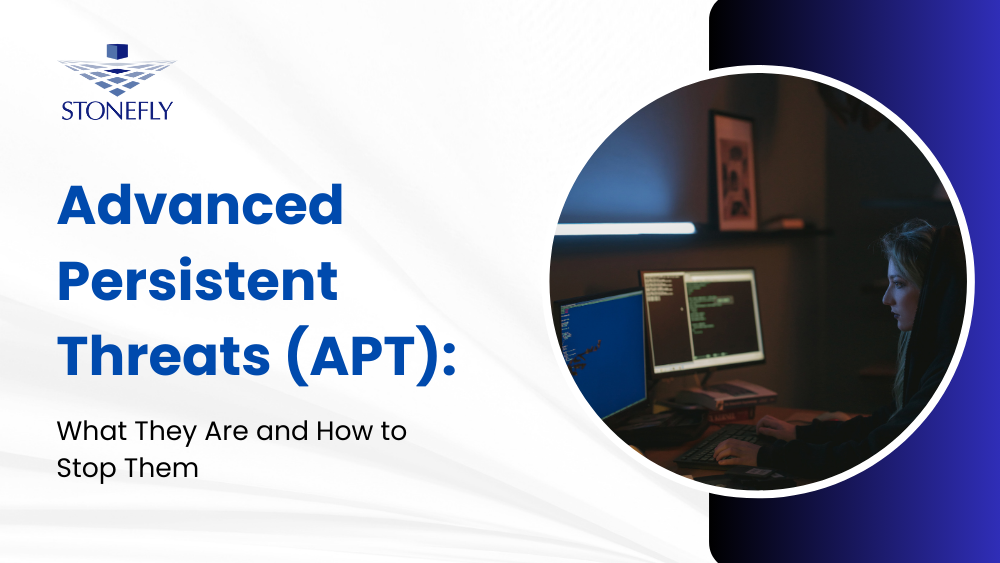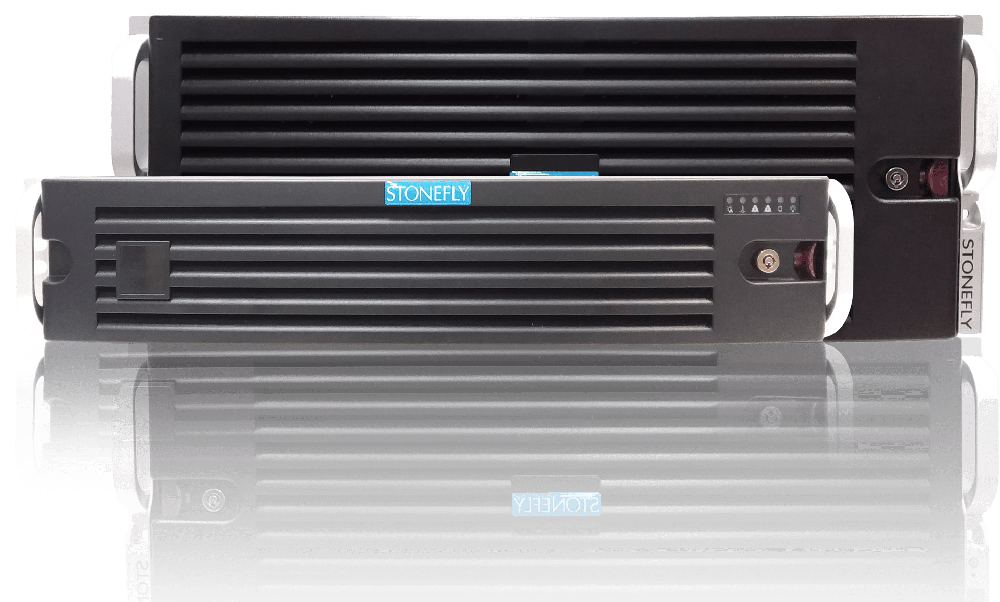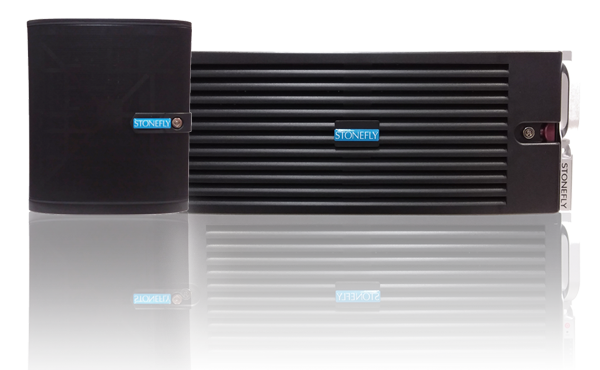Ransomware has evolved, becoming a thriving business model for cybercriminals. Ransomware-as-a-Service (RaaS) exemplifies this transformation—a lethal alliance between the creators and distributors of ransomware. It’s no longer a threat relegated to tech scaremongering; it’s a real, pervasive danger.
In this blog, we delve into the world of RaaS, understanding its inner workings, analyzing notable incidents, and most crucially, exploring how air-gapped, immutable backups, and steadfast defense strategies can stand as the bedrock of protection against this formidable adversary.
What is Ransomware-as-a-Service?
Ransomware-as-a-Service, commonly abbreviated as RaaS, is a malevolent business model where cybercriminals create and distribute ransomware to others for a fee or percentage of the ransom proceeds. Essentially, it’s a turnkey operation for launching a ransomware attack, enabling even those with limited technical expertise to execute devastating cyber assaults.
In the RaaS ecosystem, developers, also known as “affiliates,” craft and customize ransomware strains. These affiliates may lack the technical knowledge to create such malicious software from scratch, but through RaaS platforms, they gain access to pre-built ransomware kits. These kits are often equipped with various functionalities, encryption algorithms, and distribution methods.
How Criminals Utilize Ransomware-as-a-Service (RaaS)
Ransomware developers or operators seek to maximize their profits and reach by recruiting affiliates to distribute their malware. The developers provide the ransomware and a framework for attacks, and the affiliates execute the campaigns. Affiliates are incentivized through a revenue-sharing model, where they receive a percentage of the ransom payments collected from victims.
This partnership allows for a wider reach and a more diverse set of potential victims. Criminals employing RaaS can focus on refining the ransomware’s malicious code while their affiliates exploit vulnerabilities, spread the ransomware, and negotiate ransoms. This collaboration creates a formidable and flexible criminal network that can rapidly deploy attacks on a global scale.
The rise of Ransomware-as-a-Service presents a significant challenge in the battle against cybercrime, emphasizing the critical need for comprehensive cybersecurity measures to protect individuals, businesses, and institutions from the far-reaching implications of such criminal activities.
Ransomware Attack Methods and Strategies
Understanding the methods and strategies employed by ransomware attackers is vital in fortifying your defenses against potential cyber threats.
Common Ransomware Delivery Techniques
Ransomware attacks typically begin with a point of entry into the victim’s system. Attackers utilize various delivery techniques, including:
- Phishing Emails: Attackers send deceptive emails disguised as legitimate communications, often containing malicious attachments or links. Once the recipient interacts with these elements, ransomware can infiltrate the system.
- Malicious Websites and Downloads: Ransomware can be downloaded onto a system through compromised websites, malicious advertisements, or disguised as legitimate software, exploiting vulnerabilities in the system.
- Malvertising: Cybercriminals leverage online advertising networks to spread ransomware. Malicious advertisements are displayed on genuine websites, tricking users into downloading malware.
- Drive-by Downloads: Ransomware can automatically download and install without the user’s consent when visiting a compromised or malicious website.
- Remote Desktop Protocol (RDP) Exploits: Attackers exploit vulnerabilities in RDP to gain unauthorized access to a victim’s network, where they can deploy ransomware.
- DDoS Attack: Distributed Denial of Service (DDoS) attacks may serve as a distraction technique while ransomware is quietly deployed in the background, taking advantage of the chaos caused by the DDoS.
- Remote Code Execution (RCE): Exploiting vulnerabilities to remotely execute malicious code on a victim’s system, providing an entry point for ransomware installation.
- SQL Injection: Exploiting weaknesses in web applications to inject malicious SQL queries, potentially leading to unauthorized access and ransomware deployment.
- Remote Access Trojans (RATs): Attackers deploy RATs to gain unauthorized access to a system. Once inside, they can deliver and activate ransomware.
Ransomware Execution and Encryption Process
Once ransomware gains access to a system, it executes a series of steps to encrypt files and demand a ransom:
- Execution: The ransomware executable launches on the victim’s machine, initiating its malicious activities.
- System Scan: The ransomware conducts a scan to locate specific files for encryption, often targeting critical data such as documents, images, and databases.
- Encryption: Using strong encryption algorithms, the ransomware encrypts the identified files, rendering them inaccessible to the victim. A decryption key is generated and held by the attacker.
- Ransom Note: After encryption, a ransom note is displayed, explaining the situation to the victim and demanding a ransom, usually in cryptocurrency, in exchange for the decryption key.
Impact of Ransomware-as-a-Service (RaaS) on Organizations
Ransomware-as-a-Service (RaaS) has emerged as a malevolent game-changer in the cyber threat landscape, significantly impacting organizations across the globe.
Financial and Operational Consequences
Ransomware attacks orchestrated through RaaS models inflict severe financial and operational repercussions on targeted organizations. The financial consequences may encompass:
- Ransom Payments: Victim organizations are coerced into paying a ransom to regain access to their encrypted data. The ransom amount demanded varies, often reaching exorbitant sums, and draining financial resources.
- Legal and Regulatory Penalties: Regulatory bodies may impose hefty fines for data breaches, non-compliance with data protection regulations, or inadequate cybersecurity measures. Legal battles further escalate financial burdens.
- Recovery Costs: Rebuilding compromised systems, restoring encrypted data, and fortifying cybersecurity infrastructure entail substantial expenses, impacting the organization’s budget and long-term financial health.
Operational Disruptions Caused by Ransomware-as-a-Service (RaaS)
- Business Downtime: Ransomware attacks can paralyze operations, leading to significant downtime. The inability to access critical systems and data halts business processes, resulting in lost productivity and revenue.
- Reputation Damage: Publicized ransomware attacks tarnish an organization’s reputation and erode customer trust. Customers and stakeholders may lose faith in the organization’s ability to protect sensitive data, affecting long-term relationships.
- Service Disruptions: Service interruptions due to ransomware can cause delays in fulfilling commitments to customers, affecting service quality and client satisfaction.
Risks to Data Security
Ransomware-as-a-Service (RaaS) exposes organizations to elevated risks concerning data security and privacy:
- Data Exposure and Theft: Ransomware incidents can lead to the exposure or theft of sensitive data. Attackers may threaten to leak or sell this data if the ransom is not paid, potentially resulting in significant privacy violations.
- Data Integrity Compromised: Ransomware attacks can tamper with data integrity, making it challenging to trust the accuracy and reliability of affected data even after recovery.
- Loss of Intellectual Property: Organizations risk losing valuable intellectual property or proprietary information to cybercriminals, jeopardizing competitive advantage and future innovation.
Notable Ransomware-as-a-Service (RaaS) Variants
Ransomware-as-a-Service (RaaS) has facilitated a burgeoning market of cyber threats, empowering malicious actors with tools and platforms to carry out sophisticated attacks. Here are some of the most notorious RaaS variants:
DarkSide
DarkSide, affiliated with the cybercrime group ‘Carbon Spider’, is infamous for targeting Linux environments running VMware ESXi hypervisors. One of its major cyberattacks was the Colonial Pipeline breach, resulting in a ransom payment of nearly USD 5 million after exfiltrating approximately 100GBs of critical data.
REvil (Sodinokibi)
Operated by the Pinchy Spider, REvil, also known as Sodinokibi, is marketed as RaaS under an affiliate program. The group takes a significant portion, approximately 40%, of the profits. REvil is notorious for exfiltrating data and threatening to leak it, often showcasing proof of data theft on their data leak blog.
Dharma
Dharma has been available as a RaaS on the dark web since 2016. This variant specializes in infiltrating enterprise systems through Remote Desktop Protocol (RDP) attacks, disrupting crucial services by encrypting and stealing data. Unlike other RaaS kits, Dharma is not centrally controlled, making it difficult for researchers to comprehend the intricacies of affiliate-driven attacks.
LockBit
Available since 2019, LockBit operates on an affiliate-based model, exfiltrating victim data and causing significant harm to targeted organizations.
Netwalker
Sold by threat groups like Circus Spider and Mummy Spider, Netwalker has extorted approximately 20 million dollars within six months due to its advanced encryption techniques and cheap pricing. This has enabled even novice threat actors with limited resources to extort substantial amounts from organizations.
Frozr Locker
Frozr Locker follows a one-time fee model, allowing those who acquire the development kit to use it indefinitely. The kit offers payment services, a decryptor, a UAC bypass, and personalized messages, and has seen a surge in users recently, warranting attention as a growing threat.
Other Notable RaaS Threats:
- Cerber
- Egregor
- Hostman
- WannaCry
- Philadelphia
- MacRansom
- Atom
- FLUX
- Tox
- Ryuk
- Fakben
- ORX Locker
- Alpha Locker
- Hidden Tear
- Janus
- Ransom3
Noteworthy Ransomware-as-a-Service (RaaS) Incidents
Understanding the real-world impact of Ransomware-as-a-Service (RaaS) is crucial in recognizing the imminent threat it poses. Here are some significant incidents that shed light on the devastating consequences of RaaS attacks:
Netwalker Halts Toll Group Deliveries
The Netwalker group targeted the Australian transportation and logistics giant Toll Group. Multiple business sites experienced system encryption, leading to the shutdown of critical systems. This impacted customer-facing applications, including freight, parcels, warehousing, logistics, and forwarding operations.
BlackCat Ransomware Deployment on Microsoft Exchange Servers
Exploiting the proxy logon vulnerability in unpatched Exchange servers, the BlackCat Ransomware group gained unauthorized access to targeted networks. They remained undetected for two weeks, extracting valuable data and intellectual property before deploying the ransomware payload.
Michigan State University Network Breached by Netwalker
Netwalker targeted Michigan State University, exploiting several vulnerabilities for privilege escalation, including CVE-2020-0796. The attacker went as far as removing antivirus and anti-malware programs from the compromised systems.
BlackCat Ransomware Attack on Italian Energy Agency GSE
RaaS operator BlackCat victimized the Italian Energy Agency GSE, stealing confidential files containing critical data such as contracts, project information, reports, accounting documents, and more.
UC San Francisco Breach by Netwalker
Netwalker breached UC San Francisco, a leading research university in health sciences. During the breach, sensitive files, including student applications with social security numbers, employee information, medical studies, and financial records, were exposed. The university succumbed to the attack and paid a hefty ransom of $1.14 million.
LockBit Attack on Security Giant Entrust
LockBit, a prominent RaaS operation, orchestrated a ransomware attack on Entrust, a notable security entity. Compromised Entrust credentials were leveraged to breach the internal network, leading to encryption and exfiltration of critical data.
Lorien Health Services Breach
Netwalker targeted Lorien Health Services in Maryland, encrypting data and exfiltrating sensitive information. The breach exposed residents’ personal details, health records, and employee data. Despite the ransom demand, the organization chose not to pay, resulting in the adversary publicly leaking all the pilfered data.
Mitigating RaaS Risks with Air-Gapped and Immutable Backup & DR
To effectively combat the rising wave of Ransomware-as-a-Service (RaaS) attacks, it’s crucial to secure your organization’s production infrastructure. Two reliable ransomware protection strategies for achieving this are Air-Gapped Backups and Immutability, which play a pivotal role in protecting critical data. Alongside these, implementing Multi-factor Authentication, Volume Deletion Protection, Immutable Snapshots, and an Anti-Ransomware Scanner further enhance your organization’s resilience to cyber threats such as ransomware attacks, malware, viruses, and hackers.
Air-Gapped Backups: Enhancing Data Resilience
Air-gapped backups involve creating isolated copies of essential data, keeping them entirely separate from the primary network or any connected device. By maintaining this air gap, ransomware threats find it virtually impossible to access or corrupt these backup sets.
The process of air-gapping involves regular, automatic backup of crucial data to an isolated repository, controller, or node. This isolation ensures that in the event of a ransomware attack, your organization can retrieve and restore data from these secure, untouched backups, minimizing data loss and downtime.
Immutability: Safeguarding Data from Tampering
Immutability is the concept of rendering data unchangeable and invulnerable to any form of alteration or deletion. In the context of backup and disaster recovery, immutable backups are protected from unauthorized or malicious modifications and deletion. Even if attackers manage to infiltrate systems, they cannot tamper with or delete these immutable backups, ensuring data integrity.
Implementing immutability in your backup and disaster recovery strategy means your critical data remains unaltered and intact, ready to be restored to its original state following a ransomware attack. This layer of protection significantly reduces the success rate of ransomware attempts, enhancing your organization’s resilience against evolving cyber threats.
Multi-factor Authentication: Fortifying Access Control
Multi-factor authentication (MFA) adds an extra layer of security by requiring more than one method of authentication from independent categories of credentials to verify the user’s identity for operating system (OS) login and administrative tasks such as deleting snapshots, backups, volumes, etc.. This prevents unauthorized access to critical systems and data even if passwords are compromised.
Volume Deletion Protection: Safeguarding Data Integrity
Volume deletion protection ensures that critical volumes containing essential data cannot be deleted, providing an additional layer of defense against ransomware attempts to destroy or tamper with vital information.
Immutable Snapshots: Enhancing Data Resilience
Immutable snapshots are unmodifiable, point-in-time copies of data. These snapshots serve as a reliable restore point in case of a ransomware attack, allowing you to roll back to a secure state where your data remains intact.
Anti-Ransomware Scanner: Detecting and Preventing Attacks
Anti-ransomware scanner actively monitors your systems, looking for signs of ransomware activity and preventing potential attacks by identifying malicious patterns and behavior associated with ransomware.
By incorporating air-gapped backups, immutability, multi-factor authentication, volume deletion protection, immutable snapshots, and an anti-ransomware scanner into your cybersecurity framework, your organization can significantly elevate its defenses against the ever-present danger of RaaS attacks. The ability to recover swiftly and reliably from potential ransomware attempts is a cornerstone of modern data security.
Best Practices for Ransomware-as-a-Service (RaaS) Defense
Effectively defending against Ransomware-as-a-Service (RaaS) attacks demands a proactive and comprehensive approach. Employing best practices is paramount to fortify your organization against the relentless threat landscape.
Keeping Systems and Software Updated
Regular updates for your systems and software are your first line of defense. Cybercriminals exploit vulnerabilities in outdated software. Ensure all operating systems, applications, and security solutions are kept up-to-date with the latest patches and security enhancements. Automated updates can streamline this critical process and reduce the window of vulnerability.
Implementing Multi-Factor Authentication
Multi-factor authentication (MFA) is fundamental. By requiring multiple forms of identification, such as passwords, security tokens, or biometrics, MFA significantly enhances access security. Even if credentials are compromised, the additional layers make unauthorized access difficult, thwarting potential RaaS attacks.
Utilizing Air-Gapped and Immutable Backups
Air-gapped backups and immutable backups are the bedrock of a strong defense against ransomware. Creating isolated, unmodifiable copies of your data ensures that if an attack occurs, your crucial files remain intact and recoverable. Regularly update and maintain these backups, validating their viability to restore operations swiftly in the event of an attack.
Incident Response and Recovery Strategies
Robust incident response and recovery strategies are vital components of your defense against RaaS. Establish clear procedures for identifying, containing, eradicating, and recovering from an attack. Train your team rigorously and conduct regular drills to test the effectiveness of these strategies. An agile and well-prepared response can significantly mitigate potential damage.
By adopting these best practices, your organization can erect a formidable defense against RaaS attacks. The battle against cyber threats is ongoing, and proactive measures are key to ensuring the safety and security of your critical data.
Conclusion
In an age where digital threats loom large, fortifying your organization’s defenses is no longer a choice—it’s a necessity. Ransomware-as-a-Service (RaaS) represents a relentless adversary, but with informed strategies, you can prepare and protect your digital assets.
By understanding the tactics and strategies employed by RaaS operators, recognizing the targets in their crosshairs, and comprehending the impact on organizations, you’ve taken the first crucial steps. Implementing robust defenses, such as regular updates, multi-factor authentication, and the bedrock of air-gapped and immutable backups, is pivotal.










